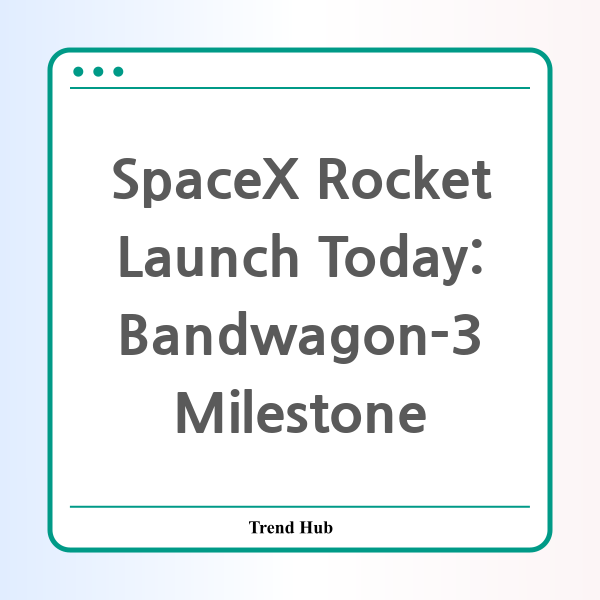* This website participates in the Amazon Affiliate Program and earns from qualifying purchases.

Have you ever wondered what it’s like to witness history in the making? Today, SpaceX accomplished yet another remarkable feat with the launch of its Bandwagon-3 mission, marking the 300th orbital flight from Cape Canaveral’s famed Launch Complex 40 (SLC-40). This milestone not only highlights SpaceX’s relentless pursuit of innovation but also showcases the growing collaboration between commercial entities and governmental agencies in exploring outer space.
The Bandwagon-3 mission took flight at 8:48 p.m. EDT on April 22, 2025, and it was a sight to behold. The Falcon 9 rocket carried a diverse array of payloads to a mid-inclination orbit, which is becoming increasingly popular among satellite operators. In fact, this launch represents SpaceX’s 245th orbital launch from SLC-40, reinforcing the site’s importance in the company’s operational framework.
But what makes this launch particularly special? For starters, the Falcon 9 first stage booster, tail number 1090, successfully returned to Landing Zone 2 just eight minutes post-liftoff—showcasing SpaceX’s ability to recycle and reuse rocket components, thus reducing costs and promoting sustainability in space travel.
Among the highlights of the payloads onboard was the fourth synthetic aperture radar (SAR) satellite for the Korea 425 Project, which is vital for South Korea’s military surveillance capabilities. This satellite joins three others launched previously, as part of a significant investment in national defense and technology through a contract worth approximately $530 million.
The Korean SAR satellites are produced in cooperation with prominent aerospace firms, employing cutting-edge technology designed to enhance observation capabilities. As noted by Thales Alenia Space, the innovative SAR technology can provide high-performance observation critical for modern satellite surveillance.
Additionally, the Bandwagon-3 mission carried Tomorrow.io's Tomorrow-S7 satellite, an important asset in the realm of meteorological observation. The Tomorrow-S7 will play a crucial role in monitoring global weather patterns, which can lead to better predictions and preparedness strategies for natural disasters, further enhancing our ability to mitigate climate-related risks.
Furthermore, the mission included Atmos Space Cargo’s Phoenix re-entry capsule. This mission, known as Phoenix 1, is noteworthy as it represents a pioneering effort by a private company in Europe to conduct a space re-entry mission. The Phoenix capsule will orbit the Earth twice before executing its re-entry, gathering critical data to refine inflatable heat shield technology for future spacecraft.
The Phoenix 1 aims to offer valuable insights that could revolutionize space transportation, making it more reliable and cost-effective for various applications, from carrying biological experiments to broader scientific research.
SpaceX’s Bandwagon-3 mission illustrates more than just another launch; it is evidence of the rapid advancements in space technology and the collaborative efforts between commercial and governmental sectors to explore and utilize space effectively. As we commit to a future that includes returning to the Moon and perhaps even venturing to Mars, every launch brings us closer to realizing extraordinary possibilities.
Keep an eye on SpaceX and its future missions. The countdown to the next milestone has already begun!
* This website participates in the Amazon Affiliate Program and earns from qualifying purchases.